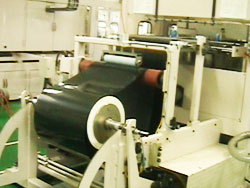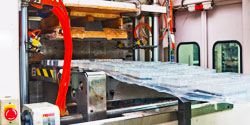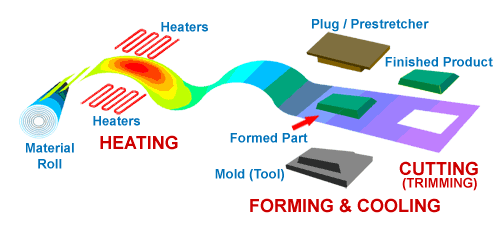|
|
||||||||||||||||||||
 Material Roll - Where the thermoforming process starts.  PET sheet formed to shape coming out of the mouth of a thermoforming machine.  Thermoforming process overview. |
WHAT IS THERMOFORMING? It is the reshaping of thermoplastic forming materials at increased temperatures into molded articles. Forming techniques start with a pre-form usually in the shape of a sheet or a film. The thermoplastic sheet is heated until it is soft, formed against a colder mold. 
The sheet is held against the mold by pressure / vacuum until the part is rigid. The formed part is then ejected from the mold and pre-cut from the rolled sheet. Final formed part is then sent to another process called cutting or trimming (can be inline or offline) where it is separated from the excess plastic surrounding it. THERMOFORMING VARIATIONS: There are several categories of thermoforming, including vacuum forming, pressure forming, twin-sheet forming, drape forming, free blowing, and simple sheet bending. But three are being used by Primepack:
|
|||||
 |
© 2001-2010 Primepack Technologies Inc.
All rights reserved. Reproduction of materials from any Primepacktech.com pages without written permission is strictly prohibited. |
||
